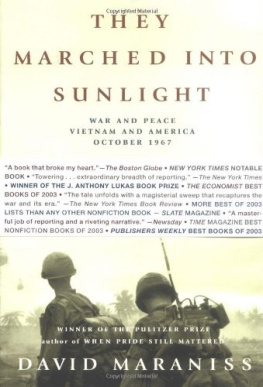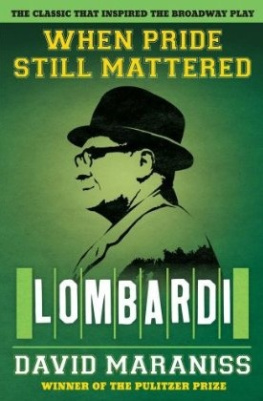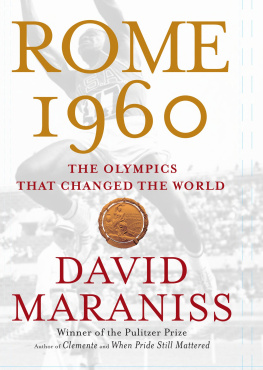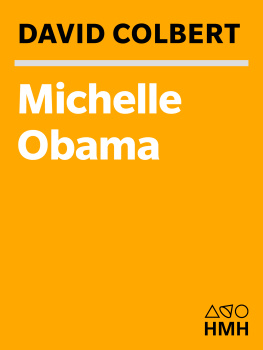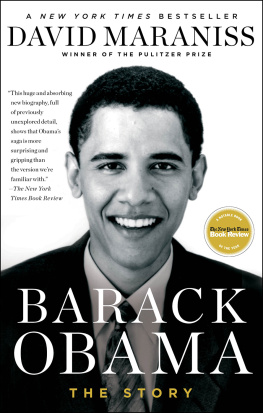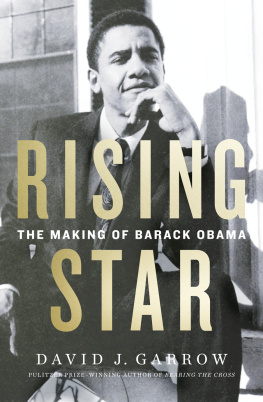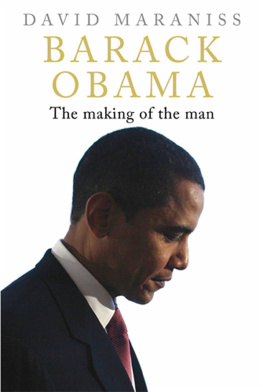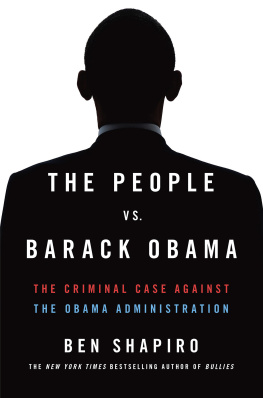Thank you for purchasing this Simon & Schuster eBook.
Join our mailing list and get updates on new releases, deals, bonus content and other great books from Simon & Schuster. CLICK HERE TO SIGN UP or visit us online to sign up at
eBookNews.SimonandSchuster.com

To the wondrous girls of my life
Linda, Sarah, Ali, Heidi, Ava, and Eliza
and to Alice
The mind that has conceived a plan of living must never lose sight of the chaos against which that pattern was conceived.
RALPH ELLISON, Invisible Man

CONTENTS

INTRODUCTION
Its Not Even Past
T his volume is not a traditional biography. It begins long before Obama was born and ends before he entered politics. He is inevitably the principal subject, and I would not have undertaken the book if not for his history-making rise, but he does not appear until the seventh chapter and even after that at times gives way to other relatives. He came out of an uncommon family, brilliantly scattered and broken, and although the parts could never be fitted neatly together again, my goal was to examine them as a whole and see the story in all its jagged and kaleidoscopic fullness. We are all random creatures, in one sense, our existence resulting from a particular series of random events, but Barack Obamas life seems more improbable than most, and I saw in the story of his family a chance to write about many of the themes of the modern world. And then, given the circumstances into which he was born, how did he figure it out? How did he create a life that made it possible for his political rise? Those are the twin obsessions that drove me as I researched this bookthe world that created him and how he created himself. Four years ago, I set off in search of answers.

On a whitewashed ledge at Punahou School bathed in Honolulu sunshine, Alan Lum and I sat and talked about the past, revisiting the days when Lum and his friend Barry were teammates on Hawaiis state championship basketball team. Then we got up and took a short walk. We left the athletic center and strolled past the prep schools outdoor pool, constructed since their days there in the late 1970s, and along the edge of a vast green playing field, before climbing the broad steps leading up to the Dole Center, the student cafeteria. Lum turned left on the lanai and cast his eyes downward, examining the concrete sidewalk. Where was it, again? He walked farther toward a set of outdoor benches, then stopped and brushed the pavement with his shoe, cleaning away the daily soot. There it was, etched in block letters decades ago by a stick or index finger before the concrete had set. OBAMA .
No historical marker designated the site. Generations of students had walked over and around it without taking notice of the name below their feet. For the first twenty-five years or so after it was written, the name would have provoked little interest in any case. Just one name among multitudes, and locals might have assumed Obama was Asian American; the syllables had a familiar Japanese cadence. The testament of a teenage boy, and he didnt even write it himself. The story goes that one of his buddies scratched his name there to get him in trouble. But it had the same meaning nonetheless. A name etched in concrete, like Kilroy was here carved into rock, is an expression of time and history and fleeting existence. Looking down, I could only think: That could have been the lone mark he left.

One April morning in Topeka, the capital of Kansas, my wife and I went searching for an address in the eleven-hundred block of Sixth Avenue. Long ago there had been an auto garage therethe Palace, it was calledand a drugstore next door. In the intervening decades, as often happens, addresses had changed and seemed two or four off from what they had been in the 1920s. The drugstore had vanished. A wide driveway now opened from the avenue into a few parking spaces in front of a nondescript building. A sign said it was an auto repair shop, an unwitting reiteration of what once had been. In front, a single-room office had gone up in recent decades, sparsely furnished with desk, telephone, and shelves of manuals, but farther into the interior was the old garage, with a high-ceilinged work area where one could envision the scene from more than eighty years earlier: a mechanic in overalls sweating under the hood of a Studebaker Big Six. Windows had been bricked up, and most of the old tin ceiling had been covered, but the place seemed to trap the dust and suffocating air of the past.
The shop manager was obliging, and let us look around. As we stood in the dingy garage, staring up at the ceiling, I asked whether he knew the buildings history. It had undergone many transformations over the years, he said. There had been a pharmacy attached to it once, and next to the pharmacy was an apartment building. According to legend, the landlord had built a secret passageway from the shop to the back door of one of the apartments, where his mistress awaited for illicit trysts. Quite a story, but there was another bit of history about which the present-day tenants knew nothing. It was in that very garage that Obamas great-grandmother Ruth Armour Dunham took her own life on a chilly Thanksgiving night, setting off a chain of events that changed the course of American history.

Out in the western reaches of Kenya, a harrowing seven-hour drive from the capital city of Nairobi, in the region hugging the uppermost gulf of Lake Victoria, I encountered a tale of two villages. The first village was Nyangoma Kogelo, up in the brushland northwest of the major city out there, Kisumu. That is where a woman known as Mama Sarah lived. She had become a celebrity in Kenya as the step-grandmother of Obama and a figure in his best-selling memoir. A trip to her compound now was like visiting royalty. The entrance was gated. Vendors sold tourist trinkets at tables just inside the grounds. She was connected to the outside world by giant satellite dishes, and protected by armed guards. There were lists to be checked, names to be vetted, rules to be imposed, factotums to accommodate. Mr. David... [ pause ] ... David, said one young relative during his inquisition in the shade of a mango tree, stopping to assess my name and worthiness. Is that Christian or Jew? Both, I responded. All to see a woman who had no blood relationship to the famous American, and was, as one Kenyan put it, nothing more than a historical accident.
The second village was Oyugis. It was around the gulf, down and to the east, a bumpy journey into the hills of south Nyanza. An old toothless woman named Auma Magak lived there with several relatives, including her son, Razik. In her seventies, Auma was a recovering alcoholic who scratched out a living by selling charcoal from a shack by the side of the road. It was Auma, in her isolation and anonymity, who had the strongest link to the Kenya side of the Obama story. She was the younger sister of Barack Hussein Obama Sr.the presidents fatherand in a tribal culture where polygamy was routine, her bloodlines were the most direct in that she and Obama Sr. had both the same mother and father. Her compound was not on the tourist maps. It was surrounded by high euphorbia bushes, but no guards checked visitor lists and there were no vendors selling trinkets. Yet step inside her hut, into the darkened stillness, and there were the testaments on her mud walls: four framed photographs of President Obama with his wife and two daughters, along with two posters and a calendar from his most recent visit as a U.S. senator. And she and Razik had stories. She talked about how her mother ran away from a brutal husband and how the little children, including Obama Sr., ran after her. Razik recalled the time in the late 1980s when his American cousin came to visit and they went fishing for Nile perch in the great lake and drank changaa, a potent gin distilled from fermented corn, and smoked weed together.
Next page

